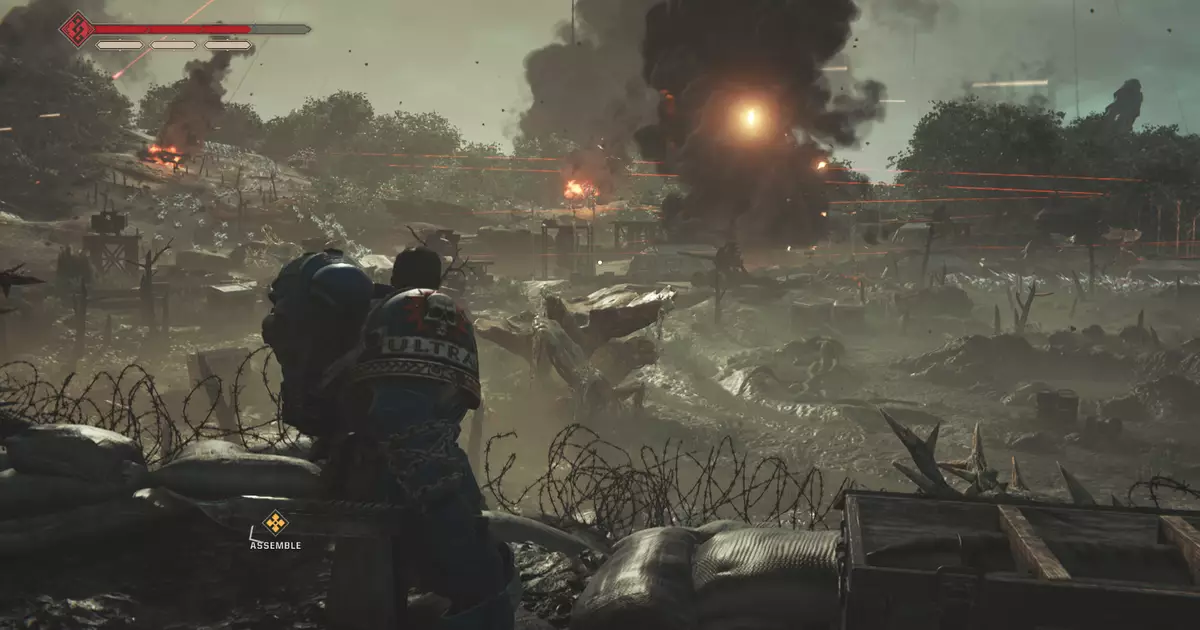The post-launch journey of *Warhammer 40,000: Space Marine 2* has sparked passionate discussions among its dedicated player base. One contention point arises from the much-anticipated addition of the Neo-Volkite pistol. My initial reaction upon logging in after the latest patch was marked by an unusual blend of excitement and disappointment. I found myself questioning not only the absence of this sought-after weapon but also the broader implications of updates within gaming communities. The Neo-Volkite, a thermal ray sidearm touted for its distinct firing mechanism, highlighted the intricate connections between game design elements and player satisfaction, as well as the nuances of community expectations.
Recent updates to the game have seen significant enhancements, with the latest patch (4.5) introducing the Neo-Volkite as a new sidearm catered to specific classes — Assault, Vanguard, and Bulwark. Billed as “a powerful thermal ray weapon,” the inclusion boasts a departure from traditional firearms by offering a continuous beam of energy. The anticipation surrounding the weapon’s arrival illustrates a depth of player engagement, where each addition is heavily scrutinized. However, while the Neo-Volkite’s appeal is evident, the absence of this weapon during the patch release led to a bittersweet experience, underscoring the fine line developers walk when balancing player desires and release schedules.
Beyond the Neo-Volkite, the update included minor adjustments to existing weapons, such as the Plasma Incinerator and Bolt Sniper Rifle. While these tweaks aim to enhance gameplay balance, they also invite questions about the frequency and impact of such updates. Each adjustment can fundamentally alter the player’s experience, provoking conversations about how developers prioritize weapon balance versus the introduction of entirely new gameplay elements.
The game’s roadmap indicates a future where players can expect the inclusion of new enemies, a critical aspect for maintaining engagement in any action-oriented title. Current adversaries, particularly the ubiquitous Tzeentch entities, have drawn criticism for their repetitiveness in combat scenarios. This situation reveals an essential dynamic in video game development: players desire variety, not just in the weapons they wield but in the enemies they face. Enemies that evoke a sense of challenge and novelty can invigorate gameplay, making the experience feel fresh and exciting.
Moreover, the longing for orc adversaries signifies a desire for more comedic or ‘light-hearted’ elements within the predominantly grimdark backdrop of Warhammer 40,000. The suggestion that introducing these character types could alleviate some of the game’s more somber tones reflects an important perspective among the player base. Amidst the violence and chaos, the introduction of humor and levity can enhance overall narrative engagement, providing a much-needed balance to the more serious aspects of the Warhammer universe.
Within the context of *Space Marine 2*, it is paramount to recognize that critique does not diminish enjoyment. The gaming community often grapples with the challenge of reconciling praise for elements one enjoys while critically evaluating those that fail to meet expectations. This duality is encapsulated in the broader discourse surrounding game updates and community engagement. Players are not merely consumers of content but active participants in a collaborative creation process, where enthusiasm and frustration intermesh.
Indeed, the work of content creators, such as Edwin’s insightful analyses, provides a platform for articulate discourse around these themes. Such critiques encourage healthy discussions about the game’s evolution and portrayal of iconic elements within the Warhammer universe. By fostering these conversations, developers can gain valuable insights into player sentiment, resulting in a more cohesive and satisfying gaming experience.
Ultimately, the narrative of *Warhammer 40,000: Space Marine 2* is still unfolding, with the introduction of the Neo-Volkite pistol serving as a pivotal moment in this journey. As the developers continue to refine gameplay through future patches and updates, the expectations of the player community will invariably shape the game’s trajectory. By valuing both ecstatic enjoyment and critical examination, both developers and players can navigate this evolving landscape together, hoping to enhance the vast universe of Warhammer 40,000 for years to come.


Leave a Reply